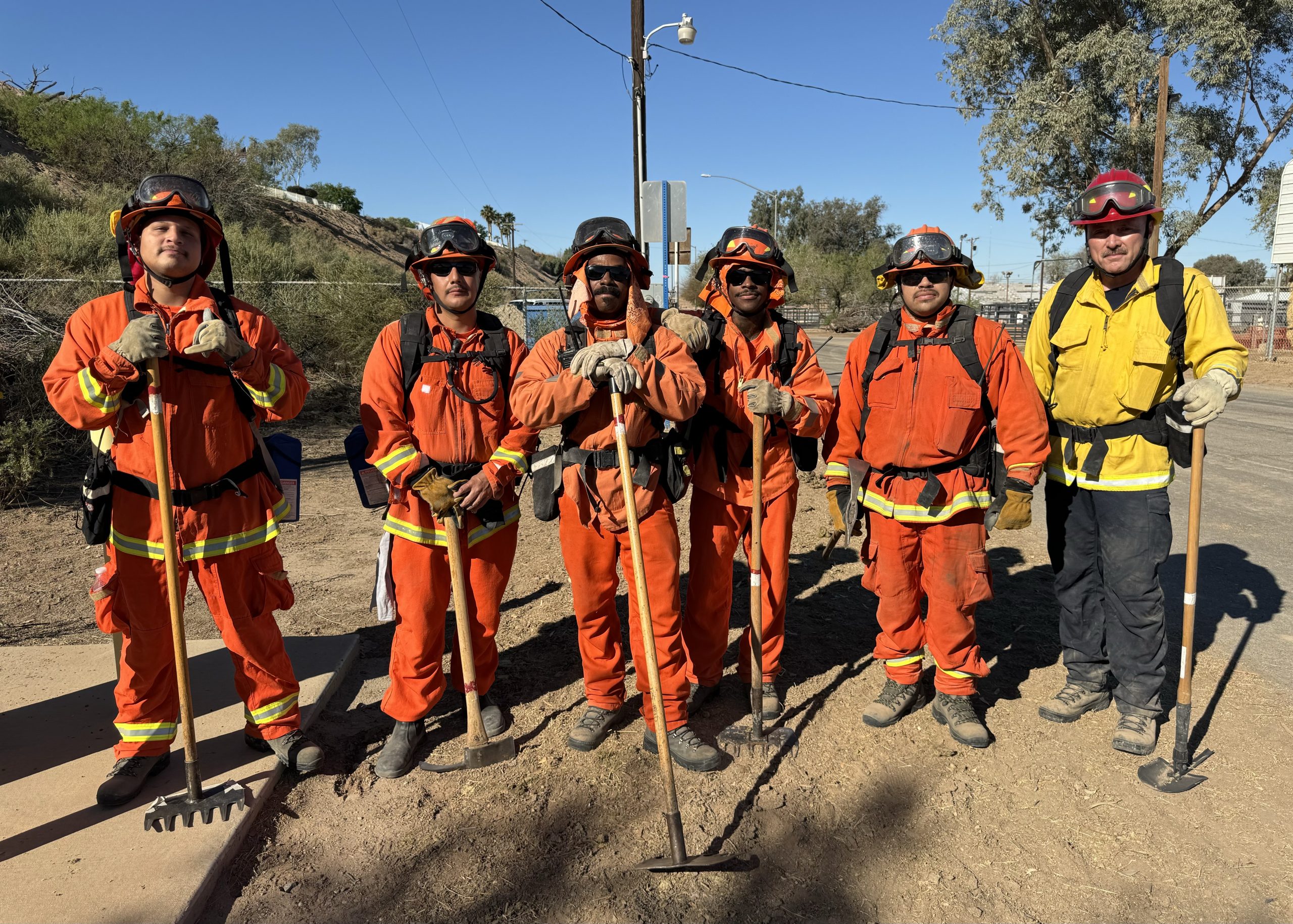Fire and Emergency Service Agencies from across the Valley gathered earlier this week to practice and hone their response skills to crises in wildland areas, utilizing the arid, overgrown landscape surrounding Cattle Call park in Brawley to simulate real life scenarios that require them to think on their feet and work as a team.
The second annual exercise took place over three days from March 24-26 amidst an unexpected heat wave and was facilitated by Holtville Fire Chief Alex Silva and Brawley Deputy Fire Chief Juan Rodelo. The men (and exactly one woman) arrived dressed in uniform shortly after 8 am on the second day with hardhats, McCafés, Starbucks drinks, and C4s in hand, ready to take on the day. Elders stressed the importance of hydration with actual water on this 97 degree Tuesday morning–a task so simple, but all too easy to forget in…

The team checked their radios and discussed weather conditions, noting that the humidity for the day was 14% which landed conditions squarely in a critical zone.
Firefighters from Holtville, Imperial, County Federal, and Calipat huddled together to form something of a superorganism. Here in front of me stood the brave men and women of this community whose sole mission is to function as a single life-saving entity, and I couldn’t help but feel proud. They were quiet and kind during orientation, displaying gestures of brotherly love towards each person that joined the group as they listened to instruction regarding the three learning stations they would visit throughout the day.
They split off into smaller units, and began practicing skills like cutting line, progressive hose lays, and creating water bars–all terms that were new to me. As I walked from one station to another, I accidentally found myself grouped in with a visiting Journalism class from Southwest High School. They were pleasant and inquisitive, and I found myself amused by a ninth grade girl who wasn’t afraid to ask questions and scribbled away on her notepad like a paid professional.
Silva expertly explained to us what each technical term meant, weaving in stories of his own experience from nearly 33 years on the job. He said that by training on landscapes similar to the ones his team faced in Los Angeles during the Palisades and the Eaton fires, all crewmembers would be better prepared should they be called on once again. The steep dirt slopes at Cattle Call Park emulate the hills and mountains found throughout California, as opposed to the flatland we are accustomed to here locally.
Silva has fought fires from Los Angeles to San Diego, and as far north as Santa Barbara and parts of Oregon state. Because some of the fire trucks in use are “loaners” from the State of California, the deal is that Imperial Valley units must also respond to out-of-area calls when necessary. The number of units deployed is calculated by how many houses are in the danger zone, he added.
Though the devastation and destruction can sometimes be overwhelming, Silva said there is a bit of a silver lining to the whole ordeal. “We sleep in semi trucks,” he said. “You can fit about 42 bunks in there… it’s kind of like…

In instances where local units have to travel, Silva said he’s glad California Fire Departments have mastered a special kind of seamless communication that comes as a result of standardized training procedures and strong leadership. He referenced the chaos that many departments endured during Hurricane Katrina back in 2005 as a cautionary tale, and works every day towards creating programs that help his crew quickly jump into action anywhere.
Coming up on his April 20th anniversary serving in the Fire Department, Silva spoke with me about the event that changed the course of his life forever. “I was originally going to join the Police Department, but during that very first week was when the Rodney King riots started, so I decided not to do that after all.”
At another station, I met Captain Eddie Medina of the Centinela State Prison Fire Department where I found him mentoring a group of five men dressed in bright orange firefighting gear. Medina was calm and reserved, although it was clear he did not have to be anything else for his crew to respect him. He explained to me that prisoners who qualify for the program are tested and then trained at the facility in the hopes that one day they will complete their sentence and move on to train with Ventura County Fire Academy. “The program started about ten years ago,” he said. “The idea is that once they’re finished, they can get hired on somewhere else.”

